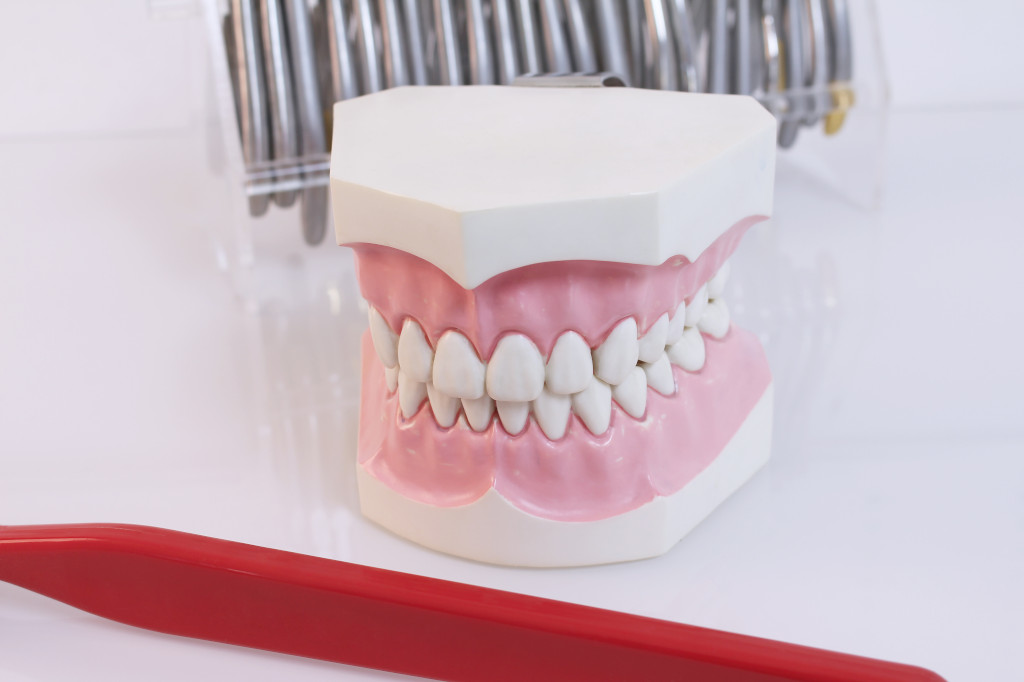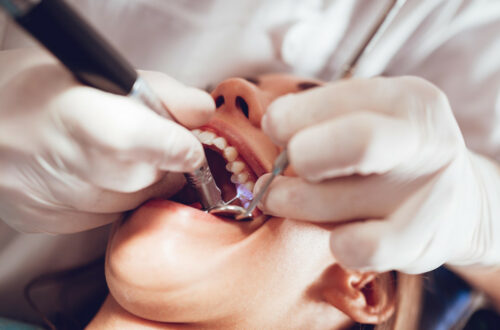
The Ultimate Guide: How to Fill the Gap Left by an Extracted Tooth
Whether you’ve recently had a tooth extracted or have been living with an empty space for some time, there are several effective techniques to consider. From dental implants to bridges and dentures, we will explore the pros and cons of each method to help you make an informed decision that suits your unique needs.
We understand the importance of a healthy and complete smile. Our team of experts has compiled this ultimate guide to assist you in finding the best solution for filling the gap left by an extracted tooth. With our guidance, you can take the necessary steps towards achieving a beautiful and functional smile once again.
Don’t let an extracted tooth hold you back. Read on to discover the options available and take the first step towards restoring your confidence and oral health.
Do you dream of a new, beautiful smile? A perfect solution will be the reconstruction of teeth with the use of the Poznan prosthesis service. Qualified specialists from the Stankowscy-Białach dental clinic will do it for you!
Understanding the Importance of Replacing an Extracted Tooth
When a tooth is extracted, it is crucial to consider replacing it to maintain the overall health and function of your mouth. Leaving a gap unfilled can lead to a variety of issues, including:
- Shifting of adjacent teeth: When a tooth is missing, the surrounding teeth can start to shift and move out of their proper positions. This can result in misalignment and bite problems, leading to further oral health complications.
- Bone loss: The roots of our teeth stimulate the jawbone, helping to maintain its strength and density. Without a tooth in place, the jawbone can start to deteriorate over time, leading to a sunken appearance and potential difficulties with future tooth replacement options.
- Difficulty chewing and speaking: A missing tooth can make it challenging to chew food properly, leading to digestive issues. It can also affect your speech, causing slurring or difficulty pronouncing certain words.
By replacing the extracted tooth, you can prevent these problems and maintain the health and appearance of your smile. Now, let’s explore the different tooth replacement options available.
Dental Implant as a Permanent Solution
One of the most popular and effective methods for filling the gap left by an extracted tooth is a dental implant. A dental implant is a permanent solution that closely mimics the look, feel, and function of a natural tooth. It consists of three main components:
- Implant: A small titanium post that is surgically placed into the jawbone. The implant serves as the root of the new tooth and provides a stable foundation for the restoration.
- Abutment: A connector piece that attaches to the implant and protrudes above the gumline. The abutment allows for the attachment of the final restoration.
- Restoration: The visible part of the dental implant, which is typically a crown. The restoration is custom-made to match the color, shape, and size of your natural teeth, ensuring a seamless blend with your smile.
Dental implants offer several benefits over other tooth replacement options, making them a popular choice for many patients.
Benefits of Dental Implants over Other Tooth Replacement Options
- Natural look and feel: Dental implants are designed to closely resemble natural teeth, providing a seamless and natural appearance. The restoration is custom-made to match your existing teeth, ensuring a harmonious smile.
- Improved chewing and speaking: Unlike removable dentures, dental implants are securely anchored in the jawbone, allowing for strong and stable biting and chewing capabilities. This means you can enjoy your favorite foods without any discomfort or limitations.
- Long-term durability: With proper care and maintenance, dental implants can last a lifetime. Unlike bridges, which may require replacement over time, dental implants offer a long-lasting solution that can save you time and money in the long run.
- Preservation of jawbone health: Dental implants stimulate the jawbone, just like natural tooth roots, preventing bone loss and preserving the overall health and structure of your jaw. This helps maintain facial aesthetics and prevents the sunken appearance often associated with missing teeth.
Now that you understand the benefits of dental implants, let’s take a closer look at the dental implant process.
The Dental Implant Process – From Consultation to Final Restoration
The dental implant process typically involves several stages and requires coordination between your dentist and an oral surgeon or implant specialist. Here’s a step-by-step overview of what you can expect:
- Consultation and examination: Your dentist will assess your oral health and determine if you are a suitable candidate for dental implants. This may involve X-rays, 3D scans, and impressions of your teeth to create a treatment plan tailored to your needs.
- Preparing for surgery: If you’re a good candidate for dental implants, your dentist will work with you to develop a plan for the surgical placement of the implant. This may involve extracting any remaining damaged teeth, addressing any underlying oral health issues, and discussing anesthesia options.
- Implant placement: During the surgical procedure, the implant will be placed into the jawbone. The gum tissue will then be stitched closed, and a temporary restoration may be placed to protect the implant during the healing process.
- Osseointegration: Over the next few months, the implant will fuse with the surrounding jawbone through a process called osseointegration. This creates a stable and secure foundation for the final restoration.
- Abutment placement: Once osseointegration is complete, a minor surgical procedure will be performed to place the abutment onto the implant. This allows for the attachment of the final restoration.
- Final restoration: After the gums have healed, your dentist will take impressions of your teeth to create a custom-made crown that will fit onto the abutment. The restoration will be color-matched to your natural teeth, ensuring a seamless and natural appearance.
Preparing for Dental Implant Surgery
Before undergoing dental implant surgery, it’s essential to take certain steps to ensure a successful procedure and recovery. Here are some key considerations:
- Oral hygiene: Maintaining excellent oral hygiene is crucial both before and after dental implant surgery. This includes brushing your teeth twice a day, flossing daily, and using an antibacterial mouthwash to reduce the risk of infection.
- Quit smoking: Smoking can interfere with the healing process and increase the risk of complications. It is strongly advised to quit smoking before undergoing dental implant surgery to promote optimal healing and reduce the chance of implant failure.
- Medication review: Inform your dentist about any medications or supplements you are taking, as certain medications can interfere with the healing process. Your dentist may recommend adjusting your medication routine prior to the surgery.
- Preparing your diet: Following dental implant surgery, you may need to stick to a soft or liquid diet for a few days or weeks, depending on your dentist’s instructions. Stock up on nutritious foods that are easy to chew and won’t irritate the surgical site.
- Arrange transportation: Dental implant surgery is usually performed under local anesthesia or conscious sedation. It’s advisable to arrange transportation to and from the dental office, as you may experience drowsiness or discomfort after the procedure.
Are you struggling with oral problems? Are you wondering whether tooth extraction will be necessary? Contact the Stankowscy-Białach dental clinic!




